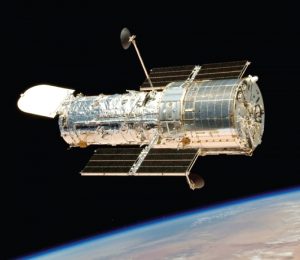
Several researchers in the Department of Physics and Astronomy have been selected for observation time on the Hubble Space Telescope. One member, Professor Dean Townsley, as part of an international collaboration, will use the telescope to measure the surface temperature of a white dwarf and its theory of “hibernation.”
A white dwarf is a small star, the size of a planet, which has run out of nuclear fuel. The binary star system is another aspect of the proposal, titled “The Classical Nova Hibernation Scenario: A Definitive Confirmation.” When one star loses its nuclear fuel, another star with a different mass and of close proximity, may “share” its gas in order to recharge a white dwarf. After a long enough period, the white dwarf will explode into a nova or supernova. After a nova explosion the white dwarf will go into a sort of hibernation, spinning until it’s binary star gets close again to restart the whole process. The Hubble Telescope will be used to test the validity of this theory.
When asked about this project, Dr. Dean Townsley stated, “If confirmed, the hibernation scenario could lead to a paradigm shift in our understanding of how mass-transferring binary stars change with time. They may spend large fractions of their history in hibernation, during which they are harder to detect.”
Successful Hubble proposals are chosen by panels of scientists from all over the world, and only about one in ten submitted proposals are chosen. A major requirement for any proposal is that observations can only be done using the Hubble Telescope and not any other ground based telescope.